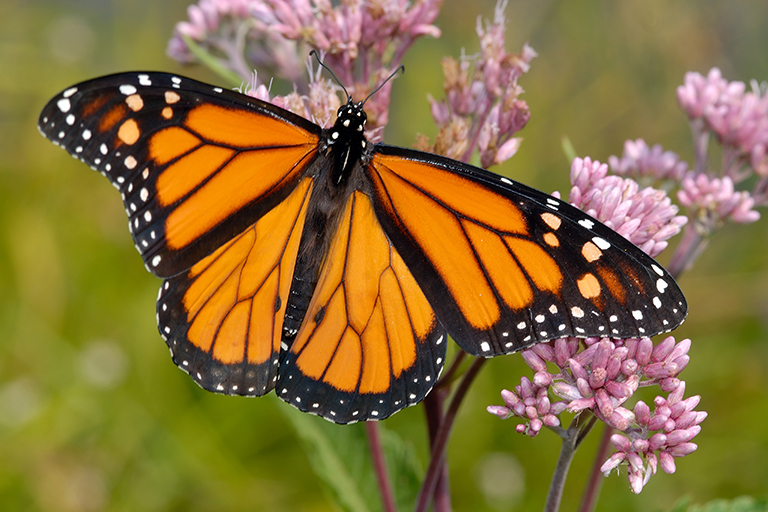By Vicki Spencer, Master Gardener
Last summer, I was so enthralled with the painted lady butterflies flittering around my garden that I mentioned it to my friend Jenny who lives in Kansas. She said they were also enjoying large numbers of painted ladies in the Midwest. Then Jenny asked where they go in the winter. Her question gave me pause. I wasn’t sure what happened to the butterflies when the season changed. I needed to do a little research.
Even though most butterflies have a short life span — ranging from a week to a month — some do live longer. Many of these species migrate to warmer climates when it gets cold. In the United States, migrating butterflies, such as the painted lady, spend winter in the desert southwest or the Gulf Coast. This past year the painted lady migration was so great that some people mistook images on the National Weather Service radar as a bird migration. It’s as if the painted ladies were challenging the more notorious monarchs to a migration race.
But monarchs, which may live up to 9 months and travel long distances, provide stiff competition. They are unique in that they are the only butterfly that makes a two-way migration, much like birds. Around October when temperatures drop and food sources decline, the monarchs will travel 3,000 miles or more to their overwintering sites. West of the Rockies, they go to small grove trees in California near Santa Cruz and San Diego. East of the Rockies, millions of monarchs find their way to their winter sites in Mexico and the Michoacán highlands.
Unlike monarchs, other butterfly species may overwinter in Colorado in any of their four life stages: larva (egg), pupa (caterpillar), chrysalis and adult. After mating or as cold weather approaches, adult butterflies typically deposit eggs on the underside of leaves or burrow into leaf litter at the base of their host plants. While some species prefer flowering plants, such as asters, lumens or milkweed, others may prefer aspen, birch or cherry trees. They lay eggs on leaves of the preferred plant because the caterpillars that hatch are host specific and do not travel far to eat.
Last year when we had an early frost, I had assorted potted flowers on my patio that I didn’t want to freeze. Instead of covering them, I brought them into the house. I meant to take them back out but decided it would freeze again before long, so I didn’t bother. During the next few weeks, I kept finding caterpillars eating the plant leaves and squiggling across the floor. Believing these caterpillars might become butterflies, I didn’t have the heart to kill them. Instead I placed the plants and caterpillars back outside hoping they could continue to the next life cycle stage. In the third stage, the caterpillars form chrysalises where they grow tissue, limbs and organs. Once this metamorphosis is done, new butterflies emerge and the cycle is complete.
Regardless of their life stage, butterflies that spend winter in Colorado survive just like any hibernating cold-blooded animal. Their body temperature drops to that of their surroundings. As days shorten in autumn they secrete glycerol, a natural “antifreeze,” into their body fluids.
Although the body temperature of hibernating butterflies falls extremely low, the glycerol in their body prevents ice crystals from forming. If ice crystals were to form, they would rupture cells and the butterflies would die. These hibernating species tuck into crevices in logs or underneath loose bark in trees, and tend to be the ones we see on the first warm days of spring.
It’s a good idea to provide an overwintering habitat for butterflies because we need them to pollinate our gardens. Although butterflies are not as efficient as bees in moving pollen, they still do a good job in their own way. While perching on flower heads to collect nectar, they accumulate pollen on their long legs and body, and then they spread the pollen to other flowers as they flutter around. They are attracted to colorful flowers, preferring red most of all, but also find nectar by seeing ultraviolet light. If you want to attract butterflies in your garden, try planting wildflowers and native varieties of annuals and perennials that will bloom in succession. Last year in my garden, butterflies were drawn to salvias, alyssum, bee balm, cosmos, butterfly bush, lavender, hollyhock and catmint.
Gardener Vicki Spencer has an eclectic background in conservation, water, natural resources and more.

